This week’s roundup is sponsored by Joe Bike, opening a second shop on SE Clinton and 25th later this month!
Here are the most noteworthy items the BikePortland community came across in the past seven days…
The freeway expansion scam: Transportation 4 America’s excellent new “Congestion Con” report found that while we’ve poured billions into wider freeways, congestion is only getting worse.
Good car tech: This new dooring warning system from Ford Europe flashes red lights and even prevents the driver’s door from opening when a bicycle rider approaches.
Out of control: Officials want stricter car control measures after a dude lost control of his truck and rammed into a sacred stone statue on Easter Island.
Boring stuff works: CityLab author says if our goal is safer and better transport systems we’d be wise to focus on “mundane” solutions like sidewalks, bike cars on trains, sidewalks, and so on.
Scooter perspective: A newly published study of 3,600 parked vehicles found just 0.8% of scooters and shared bikes were parked improperly while nearly 25% of cars were.
Google knows: A man became a suspect in a burglary after Google granted a “geofence warrant” to local authorities and they found his bike ride tracker data showed him near the scene of the crime.
Advertisement
Too damn big: People are just now realizing that those irrationally large and dangerous trucks that are a symbol of selfish privilege by their owners and greed by their manufacturers don’t even fit in garages or parking spots. America is sick.
Safer intersections: We talk about the dangers of intersections a lot and now there’s a great article that shares how to make them safer.
New Belgium grants: This bike-friendly beer maker has announced their 2020 bike advocacy grant program. Go for it!
Good transport planning advice: The World Bank shared what it learned about women and “invisible” users of the transport system in an African country and how it made the system work better for them. These are great lessons many cities can learn from.
Local Focus
Light rail is the new highways: As if TriMet’s SW Corridor plan wasn’t bad enough, they’ve now downgraded their estimate for how many people will use it.
Portland’s other vision zero: The Parking Minute blog informs us that as of March 1st, all new Portland developments constructed near transit are able to offer zero parking parking spaces for car users.
Advertisement
Traffic violence defined: A driver’s inability to control their vehicle resulted in them ramming through the window of a Red Robin restaurant in Clackamas and police simply called it an “accident” and issued no citation while an innocent family was permanently traumatized.
ODOT criticism, part I: A woman whose toddler was killed while walking in a north Portland crosswalk points out how ODOT’s priority for “safety” as a rationale to widen I-5 in the Rose Quarter is a sham.
ODOT criticism, part II: The latest part of our state where people are rising up against ODOT’s dangerous mismanagement of our roads is in Scappoose, where high school students are organizing to fix a Highway 30 intersection that nearly killed one of their teachers.
Tweets of the Week:
The selfishness of some car users is astounding to me:
We stopped 30 cars on HWY 26 this morning driving more than 21 MPH over the speed limit. Thank you Waze for all the police notifications while we were out there. Please slow down! pic.twitter.com/YhqQmZJ77v
— PPB Traffic Division (@ppbtraffic) March 3, 2020
Good perspective on how car culture works:
Food handler's card: Only good for 3 years and you must pass a test before each renewal.
Driver's license: Once you pass the behind-the-wheel test at 16 your ability to pilot a multiton vehicle at ungodly speeds will never be questioned again until your eyeballs stop working.
— ⛑️Car Helmets⛑️ (@CarHelmets) March 4, 2020
Summary of last night’s mayoral climate debate in live-sketch form!
So glad I live sketched last night's Mayoral Climate Debate (cohosted by @SunrisePDX & @350_PDX & others). Incisive, thought-provoking questions from young leaders answered by @tedwheeler, @sarahforpdx, @teressaformayor, @PiperCrowell, & @ozzie4pdxmayor. pic.twitter.com/Uv8QmQuM4z
— Lucy Bellwood (@LuBellWoo) March 9, 2020
— Jonathan Maus: (503) 706-8804, @jonathan_maus on Twitter and jonathan@bikeportland.org
— Get our headlines delivered to your inbox.
— Support this independent community media outlet with a one-time contribution or monthly subscription.



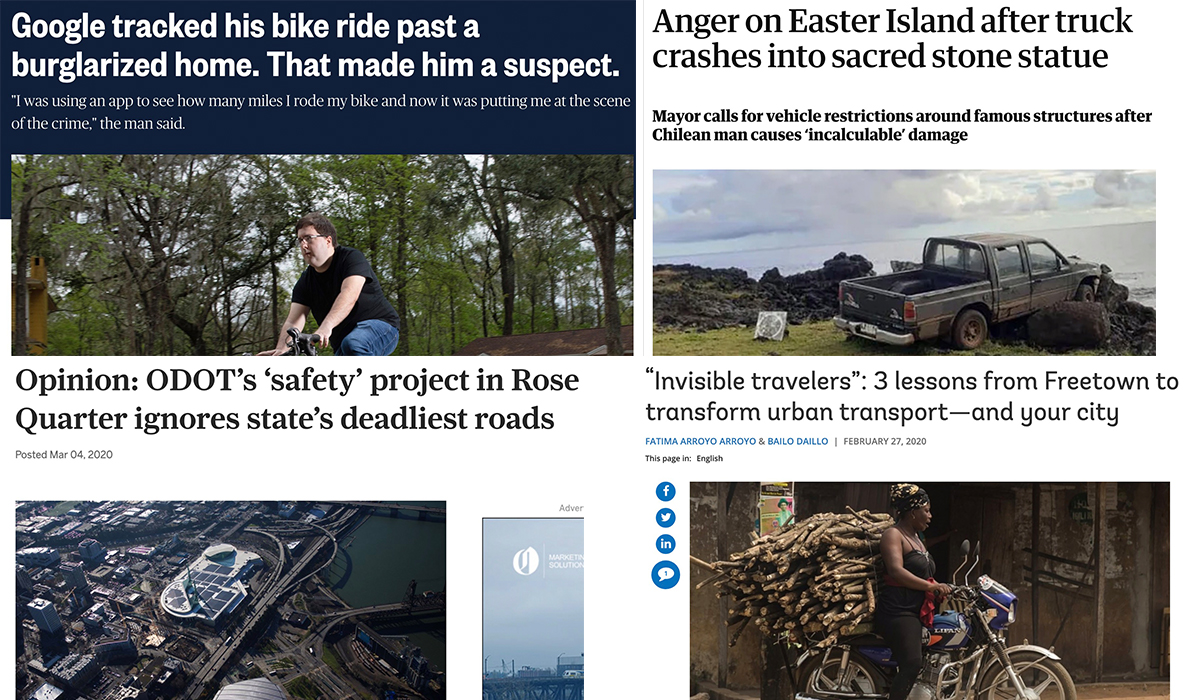
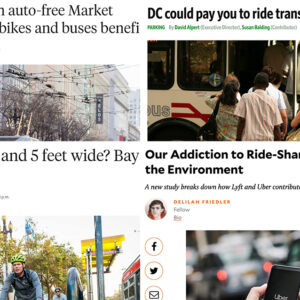
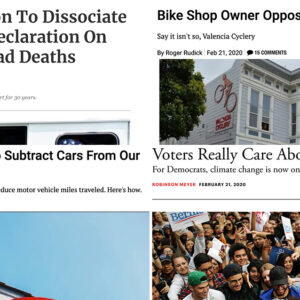
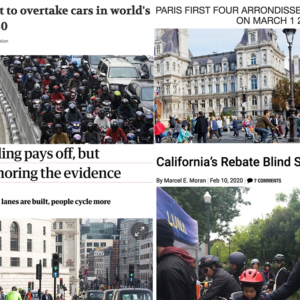
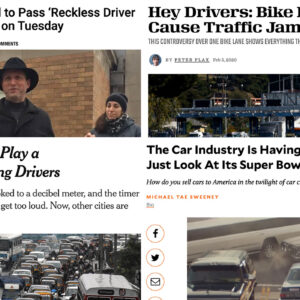
Thanks for reading.
BikePortland has served this community with independent community journalism since 2005. We rely on subscriptions from readers like you to survive. Your financial support is vital in keeping this valuable resource alive and well.
Please subscribe today to strengthen and expand our work.
The story about the geo fenced Google warrant is disturbing in that the evidence for granting the warrant is SO thin. There is nothing in the man’s behavior, even if it were witnessed by the police in person, that would even rise to the level or Reasonable Articulable Suspicion for an investigative detention.
But a judge granted a search warrant that was going to give a full data dump of this man’s Google history to law enforcement based on nothing. This is an embarrassment to the Florida judiciary that the judge would be so technologically illiterate as to not be able to see that there was nothing there.
I too am surprised the Judge granted a full data dump of the google aps on the man’s phone. It seems like the man’s name/handle should have sufficed to satisfy the 2nd round of warrant. That is similar to security camera footage being presented on TV to request viewers to identify the individual.
However, the first geo fence warrant round of information in interesting. It is a way to look at behavior without any unconscious bias by the detective.
My Dad kept driving (legally) until he was 95-year’s old, in L.A. on the Freeway! I could not stop him because my siblings would not support me. His car looked like a destruction derby vehicle, and the one time that I rode with him, it was absolutely terrifying! Imagine, he obeyed the speed limits in LA!!
Mr.Scarich, I have an idea for folks who shouldn’t drive but yet posses cars. There are car thieves in jail and on probation. Now, car theft requires some skill, hot-wiring and all, and I don’t have it and I don’t imagine that you have it. For community service that would be of great value, give paroled car thieves the VIN numbers and descriptions of cars driven by the people that shouldn’t be driving. Tell them, make these cars disappear, we don’t care what you do with them as long as they get off the road. Problem solved.
But it’s not the vehicles that are fault, it’s the drivers. Cars are easily replaceable.
I realize that the auto-theft solution is tongue-in-cheek, but even that is not a solution. My father-in-law shouldn’t have been driving, but there wasn’t anything we could do to stop him. His wife regularly hid his keys, but he just had more made. When he would crash, he would just get it fixed. I’m sure if it was stolen he’d take the insurance money and just buy something else. When the insurance company told him they wouldn’t insure him anymore because he was too dangerous, they helpfully included information on how to get insurance through the (Maryland) high risk insurance pool so he could continue driving.
“Boring stuff?” Living in Vantucky, the city that doesn’t give a damn about the life of anyone who walks, I find new sidewalks incredibly exciting!
Dave – let me guess you (assuming you actually live within the City of Vancouver limits vs. just having a “Vancouver” address in Hazel Dell etc.)…you moved out to the east [or far north] side of Vancouver for the large lot / lower housing cost and then realized that the supply of public sidewalks was limited? https://www.cityofvancouver.us/cmo/page/neighborhoods
Speaking as a planner, sadly it was a all too common lapse in the mid century or a long term county decision [similar on the Multnomah side of the state line too] to make development costs cheaper upfront…As a homeowner* you are always welcome to construct a sidewalk on your property, your neighbors may thank you and build one themselves…might just start a movement. Now if you think that the CoV has let a developer get off without building a necessary sidewalk (per ADA/ safety) then you can always attend development pre-application review meetings and submit such public comments personally or via your recognized neighborhood association. https://www.cityofvancouver.us/ced/page/pre-application-conferences
Otherwise the CoV may have a community grant for important sidewalk infill construction too.
The Guardian story about Easter Island is inaccurate. The guy wasn’t even in the parked truck and it rolled down a hill into the statue. The destruction of the statue is no less unfortunate, but let’s at least get the facts straight before we tar and feather people.
They probably don’t offer it in the U.S. because it looks like it was designed for cars, and Ford is quickly phasing out selling anything but SUV’s and Trucks in the U.S.
One of the things I noticed on my most recent trip to Australia is how small parking lot spaces are compared to spaces in Portland. My younger brother drives a Nissan X-trail, which is described by Wikipedia as a “compact crossover SUV”, but when parked in a typical Australian parking lot, it was a squeeze for me to get in and out without damaging other adjacent vehicles (and I am not overweight/obese). You literally could not park something bigger without taking up more than one parking space, which would earn you a parking citation. Generally speaking, what are called “full sized” trucks and SUVs (think F-150, Ford Expedition, Chevrolet Suburban, etc.) are not marketed/available in that market.
Local governments in the USA could discourage the use of the mega vehicles by regulating parking more than they do. For example, passing ordinances on the size/location of parking spaces, with spaces adjacent to destinations like store fronts being smaller, better suited to sedans and compact SUVs, with only a few larger spaces located some distance from store entrances for “full size” trucks and SUVs.
“Local governments in the USA could discourage…”
They could, but, thanks to Car Head, this seems very unlikely in the short run.
We as a country have yet to break the spell, reckon with the almighty car, face the music.
Even just reading the comments here on bikeportland over the past decade you can see evidence of the death grip automobility has on our collective psyche.
Are the Aussies in general, bigger or smaller than their American counterparts?
There are plenty of overweight/obese people in Australia, but not as many super obese people (i.e. BMI greater than 40) as we see here. Australia has a universal, government funded health care system, so it is in the government’s interest to take action to get people to eat better and exercise more to improve their health.
There are plenty of car heads who’d love to drive F-150 sized vehicles, but they can’t get them.
When I was stationed in Italy, we had a good laugh at the newbies that had their large American pickups shipped overseas with them. After a few weeks they realized the mistake and had to find a cheap Fiat or something similar to use during their tour. The pickups were insanely impractical in a place where the vast majority of personal vehicles are actually designed for people.
Wing mirrors, even on a big, tough pickup, stand little chance against 150+ year old stone buildings that survived a couple world wars.
Too big to fit in parking spaces…
That is not really anything new. With the notable exception of the 1980-1990 period cars and related objects have been subject to the same swelling logic. Every subsequent model is guaranteed to be heavier or larger (or both) than the prior model. Even a 2001 Honda Civic weighed twice as much as the 1972 equivalent. Same with the new Mini vs the original Mini. Today’s ‘compact’ pickups (Ford Ranger, Toyota Tacoma) are very likely as big and heavy as the ‘full size’ pickups of the seventies to which they were originally a response.
The fact that we now (also) have completely outsized monsters shouldn’t surprise. Not fitting is kind of the point. That is also why you can find videos and even public spectacles specifically devoted to those in jacked up pickup trucks driving over cars, smashing them.
I wonder how much of that is also related to the general size increase in Americans. Portion of comment deleted for offensive language.
Moderator: Please consider editing this comment for its toxic ignorant language.
Thanks for flagging this.
What’s fun is to watch 1950s and 60s shows and home videos of average American cars on city streets. They’re HUGE!!
The 50s/60s behemoths were nowhere as large as the current crop of “full-size” pickups. My 1967 Chrysler New Yorker (yes a stupid car for a high-schooler) was a mere 18′ 4″ long and 6′ 6″ wide. A modern stock F250 regular cab is a full 1-foot longer, 2-feet taller and 6-inches wider (2-feet wider if you include the mirrors). Those size bumps don’t take into account the many common options that bulk up the F250 such as lift kits, big tires, heavy duty bumpers, super or club cabs. I had trouble finding parking for the Chrysler in 1975, I can’t imaging dealing with a new F250 today.
Having just about been clobbered today in a cross walk when someone failed to heed ORS 811.028 (https://www.oregonlaws.org/ors/811.028) while making a right-turn-on-red, I can relate. The fellow had the audacity to roll down his window and justify is bad behavior because he started before the light changed. Never mind that I was right at the corner, obviously waiting for the light and certainly less than the two-lanes away rule. Personally, I’d love to switch places and see how he feels when give such a lame excuse for ignoring the rules. Every driver should be required to pass German-level driving tests every couple of years.
I don’t know what happened here. This was supposed to be in response to El Biciclero’s comment about why “motorists think it is everyone else’s responsibility to stay of their way.”
Stph
” in a cross walk when someone failed to heed ORS 811.028 (https://www.oregonlaws.org/ors/811.028) while making a right-turn-on-red…”
Exactly how I was actually hit the only time I have been hit by an actual car. In my case, the driver’s light was fully red, he stopped, then drove right into me as I started to cross directly in front of him. A classic case of looking left while turning right. This driver was much more contrite and reasonable in implicitly acknowledging responsibility, however.
There needs to be car parking near transit hubs, at least if you expect people to board transit and take it places such as urban cores.
Wouldn’t that money be better spent investing in ways to get people from their homes to transit centers without their cars? Someone broke down the math for parking on here a while ago and a single space in a garage costs as much as a full days fare 5 days a week for 50 years and a space in a lot was a little over half a full days fare.
When I was in planning school 20 years ago, the rule of thumb on parking costs was $18,000 for each surface parking spot (which includes a portion of the driving space), $34,000 for each covered parking spot, and $50,000 per spot in a parking garage. There was a 30% premium for major cities like NY and SF, and a 20% discount for the Southeast where construction costs are lower. I dare say that prices have since risen.
Nope. The expense of them is absurd and the ridership increase is negligible compared to other higher density uses of the land. https://www.sightline.org/2018/11/26/portland-southwest-corridor-free-park-and-ride-affordable-housing/
Super interesting article. It would seem, though, that trading P&Rs for “affordable” housing would not persuade anyone to trade a current car trip for a transit trip, and—depending on what “affordable” implies (income restrictions?)—could reinforce the notion that transit is “for the poor”. No doubt this kind of a strategy is the most ethical in that it serves to house people who need shelter rather than empty cars—and for that alone is vastly preferable—but as far as shifting more of our collective trips to transit, it would seem to create a tiny cushion to absorb a few thousand new residents without adding to freeway congestion.
But for every thousand units of transit-oriented housing reclamation/development, how many units are built far from transit and would be underserved by buses, generating more car trips? I love the idea of adding easy bike routes to get from neighborhoods to transit stations, but space on buses/MAX is extremely limited for taking a bike on board, and I would not EVER leave my bike all day at a virtually abandoned (outside of peak hours) MAX platform bike parking facility, caged or not.
I love a P&R because it’s really convenient on days I can’t bike to work, and I know the Sunset garage and Millikan Way P&R are usually 100% full in the mornings, but it isn’t the allure of a park and ride alone that entices me to use transit, it’s that other options become super inconvenient or expensive, and then I’m glad there’s a park and ride.
Being kind of a twitter voyeur, I guess, I sometimes can’t help reading the threads attached to interesting tweets, such as the “busting speeders” tweet above. Imagine my shock at replies to this thread blaming such things as “bikes”, and those who go the actual speed limit for “causing road rage”. So those who drive around expecting to speed everywhere, but have their efforts to do so stymied by law-abiding citizens and vulnerable road users, and then inevitably find themselves stricken with road rage and compelled to drive in an even more aggressive and threatening manner, would seem to consider themselves victims of these other road users who are “causing” their rage. No wonder so many motorists think it is everyone else’s responsibility to stay out of their way.
too bad the google story is behind an anti-ad blocker blocker. now I guess I’ll never know how much BS was done by the “authorities” in this “case”…
Hit a statue: Stricter car controls! Hit a family: Meh. Maybe Red Robin needs some statues.
The parking lot space can always be repurposed once it becomes economically useful to build on the land. Think of it as land-banking.
Trimet had to reduce its projected ridership on the SW Corridor MAX line by 12% because they elected to reduce parking spots:
> The planned $2.8 billion light rail line between downtown Portland and Bridgeport Village in Tigard would serve 12 percent fewer passengers than previously forecasted. Interestingly, TriMet lowered its projected ridership numbers because the project now plans to build 2,000 fewer park-and-ride spaces than a previous version of the plan.
https://www.wweek.com/news/city/2020/03/04/trimet-downgrades-what-it-expects-to-accomplish-with-its-next-light-rail-line/
People in SW get around by car. That’s not going to change dramatically: It’s going to change incrementally. Get them driving to the train, then figure out the last mile problem with e-scooters, e-bikes, or whatever.
People in SW get around by car because we don’t give them any other comparable or decent option. How is building more infrastructure for cars supposed to convince them to get around without a car? The operating cost per boarding ride for the bus is currently between $5 and $6 or about the same cost that a single parking space in a garage costs us over 50 years. Perhaps that money would be better spent on increased bus service to the transit centers in that area.
We’ve already reduced the reliability and functionality of this project by capitulating to drivers do we really need to also build them more infrastructure?
How about using google data to catch speeders. Start with those over 21 mph above crazy Wazers. Check out photos of crash carnage if you believe it’s a victimless, non-violent crime.
“Check out photos of crash carnage if you believe it’s a victimless, non-violent crime.”
Yeah, but those crashes are caused by slow people who cause road rage and don’t get out of the way. Let’s focus on the real crime of “impeding” traffic…
/s